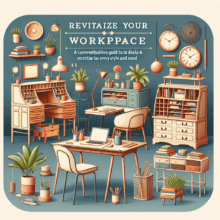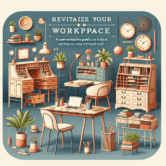Introduction
When it comes to home design, cabinets and cupboards play a crucial role in both functionality and aesthetics. They not only provide necessary storage but also contribute significantly to the overall ambiance of a room. Whether you’re remodeling your kitchen, bathroom, or any other part of your home, making the right choices regarding cabinets and cupboards is essential. In this comprehensive guide, we’ll explore everything you need to know to choose the perfect cabinets for your needs, including materials, styles, finishes, and much more.
Table of Contents
-
Understanding Cabinet and Cupboard Types
- 1.1 Kitchen Cabinets
- 1.2 Bathroom Cabinets
- 1.3 Living Room and Bedroom Cabinets
- 1.4 Garage and Utility Cupboards
-
Material Matters: The Best Options for Your Cabinets
- 2.1 Wood
- 2.2 Metal
- 2.3 Laminates
- 2.4 Glass
-
Styles and Designs to Consider
- 3.1 Traditional
- 3.2 Modern
- 3.3 Rustic
- 3.4 Custom vs. Pre-Manufactured
-
Finishes and Colors: Making the Right Choice
- 4.1 Stains
- 4.2 Paints
- 4.3 Natural Finishes
- 4.4 Popular Color Trends
-
Understand the Measurements and Space Requirements
- 5.1 Measuring Your Space
- 5.2 Understanding Layouts
- 5.3 Maximizing Storage with Cabinet Design
-
Budgeting for Your Cabinet Projects
- 6.1 Setting a Realistic Budget
- 6.2 Costs of Different Materials
- 6.3 DIY vs. Hiring Professionals
-
Installation and Maintenance Tips
- 7.1 DIY Installation Steps
- 7.2 Hiring Professionals: What to Expect
- 7.3 Maintenance Tips for Longevity
-
FAQs: Common Queries About Cabinets
- 8.1 Q&A Section
- 8.2 Troubleshooting Common Issues
-
Resources
- Table of Resources
-
Conclusion
-
Disclaimer
1. Understanding Cabinet and Cupboard Types
1.1 Kitchen Cabinets
Kitchen cabinets are a vital part of any culinary space. They come in various configurations, including base cabinets, wall cabinets, and tall cabinets.
- Base Cabinets: Generally placed on the floor and hold countertops.
- Wall Cabinets: Mounted above the counter to maximize space.
- Tall Cabinets: Often used as pantry storage.
1.2 Bathroom Cabinets
Bathroom cabinets focus primarily on function, balancing aesthetics with storage capability.
- Vanity Cabinets: Usually combined with a sink.
- Medicine Cabinets: Ideal for small spaces but concentrate on essential items.
1.3 Living Room and Bedroom Cabinets
In living rooms and bedrooms, cabinets serve as storage solutions and decorative elements.
- Entertainment Centers: Designed to hold electronics.
- Armoires: Traditionally used for clothing but versatile enough for other storage needs.
1.4 Garage and Utility Cupboards
These cabinets are geared towards functionality and organization.
- Tool Storage: Must be durable to handle heavy equipment.
- Utility Cabinets: Often designed to store cleaning supplies and household items.
Note: Each type serves different functions and requires careful planning to select the best fit for your space.
2. Material Matters: The Best Options for Your Cabinets
2.1 Wood
Wood remains the gold standard for cabinets due to its durability and aesthetic appeal.
- Types of Wood: Hardwoods like oak, maple, and cherry provide sturdiness, while softwoods like pine are budget-friendly.
- Advantages: Wood cabinets can be refinished and repainted, allowing customization over time.
2.2 Metal
Metal cabinets are increasingly popular in modern designs.
- Durability: Metal is resistant to scratches and dents.
- Styles: These can range from utilitarian to sleek and modern.
2.3 Laminates
Laminates offer a cost-effective solution without sacrificing style.
- Customization: Available in a broad range of colors and patterns.
- Maintenance: Generally easy to clean and resistant to water.
2.4 Glass
Glass cabinets add a touch of elegance and transparency to any room.
- Types: Frosted, clear, and textured options exist, each providing a unique look.
- Use: Great for displaying items while keeping them organized and dust-free.
3. Styles and Designs to Consider
3.1 Traditional
Traditional cabinets often showcase intricate designs and wood grains.
- Features: Raised panel doors, ornate molding, and finishes that enhance the natural beauty of wood.
- Compatibility: Best suits classic or farmhouse-style homes.
3.2 Modern
Modern cabinets lean towards clean lines and functional designs.
- Characteristics: Flat-panel doors, minimalistic hardware, and often made from metal or glass.
- Suitability: Ideal for contemporary or industrial interiors.
3.3 Rustic
Rustic cabinets evoke a warm, homely feel.
- Configuration: Often made from reclaimed wood or distressed finishes.
- Best Uses: Express a casual aesthetic in log cabins or country-style homes.
3.4 Custom vs. Pre-Manufactured
Choosing between custom and pre-manufactured cabinets involves understanding your needs.
- Custom Cabinets: Tailored to your specific requirements but come at a higher cost.
- Pre-Manufactured Options: Offer affordable solutions but may limit customization.
4. Finishes and Colors: Making the Right Choice
4.1 Stains
Stains enhance the natural beauty of wood, allowing the grain to shine.
- Types of Stains: Gel stains, oil-based stains, and water-based stains each have unique applications.
- Choosing the Right Stain: Consider the overall tone of your home and existing furniture.
4.2 Paints
Painted cabinets can bring a fresh and modern look.
- Colors: Bright whites, deep blues, or muted greys can all set a specific mood.
- Techniques: Consider techniques like chalk paint for a vintage vibe or high-gloss finishes for a modern touch.
4.3 Natural Finishes
Natural finishes retain the wooden look while providing a layer of protection.
- Oils and Waxes: These finishes are often eco-friendly and enhance the natural color of the wood.
- Considerations: Maintenance is essential as these finishes may need to be reapplied over time.
4.4 Popular Color Trends
Exploring current color trends can help you stay fashionable.
- Two-Tone Cabinets: Mixing colors can create visual interest.
- Neutral Palettes: Shades like beige and grey remain timeless and versatile.
5. Understand the Measurements and Space Requirements
5.1 Measuring Your Space
Accurate measurements ensure proper fitting and functionality.
- Height: Standard base cabinet height is 34.5 inches; wall cabinets are typically 30, 36, or 42 inches high.
- Depth: Most wall cabinets are 12 inches deep, while base cabinets are usually 24 inches deep.
5.2 Understanding Layouts
Contemplating open space and flow is essential when planning layouts.
- Work Triangle: In kitchens, the placement of the stove, sink, and refrigerator should form a triangle for efficient workflow.
- Zoning: Creating distinct function areas can help organize spaces better.
5.3 Maximizing Storage with Cabinet Design
Utilizing innovative design elements can enhance storage.
- Pull-Out Shelves: Ideal for accessing deep cabinets without bending.
- Vertical Storage Solutions: Utilizing vertical spaces can help take advantage of height.
6. Budgeting for Your Cabinet Projects
6.1 Setting a Realistic Budget
Determine the budget before beginning the project to avoid overspending.
- Research Costs: Look into different cabinet types and the range of prices associated.
- Include Installation Costs: If you hire professionals or a DIY approach, factor in costs for tools and materials.
6.2 Costs of Different Materials
The material chosen will significantly influence the budget.
- Cost Variability: Wood can vary widely in price, while laminates and metal options may be more budget-friendly.
- Lifespan Consideration: Investing in high-quality materials may reduce long-term maintenance costs.
6.3 DIY vs. Hiring Professionals
Deciding whether to undertake the project yourself or hire a professional can affect your budget.
- Benefits of DIY: Typically cost-saving but requires time and skill.
- Professional Help: Can lead to a higher upfront cost but may result in a more polished finish and fewer errors.
7. Installation and Maintenance Tips
7.1 DIY Installation Steps
Installing cabinets can be manageable for those with basic skills.
- Preparations: Prepare the area, gather tools, and familiarize yourself with the instructions.
- Steps to Follow: Include leveling, attaching to walls, and securing doors.
7.2 Hiring Professionals: What to Expect
If you opt for professional help, understand the process.
- Initial Consultation: Discuss your needs and ideas during the first meeting.
- Installation Timeline: Professionals should provide a timeline and update you throughout the process.
7.3 Maintenance Tips for Longevity
Preserving your cabinets ensures they look good for years.
- Cleaning Techniques: Use gentle cleaners and avoid excessive moisture.
- Routine Checks: Inspect for wear and tear, and address issues promptly to prolong life.
8. FAQs: Common Queries About Cabinets
8.1 Q&A Section
Q: What is the average lifespan of kitchen cabinets?
A: High-quality kitchen cabinets can last anywhere from 10 to 50 years, depending on the material and usage.
Q: Can I repaint my cabinets myself?
A: Yes, with proper preparation and high-quality paint, you can successfully refinish your cabinets.
Q: How do I prevent my cabinets from warping?
A: Ensure they are made from high-quality materials, and control the humidity in your home.
Q: What should I do if my cabinets start to smell?
A: Empty them and clean interior surfaces with a solution of vinegar and water.
8.2 Troubleshooting Common Issues
- Gaps Between Cabinets: This can usually be resolved with filler strips.
- Difficult Doors: Adjust hinges or check for blockages to resolve alignment problems.
9. Resources
| Source | Description | Link |
|---|---|---|
| Cabinet Makers Association | Resources for cabinet manufacturers and designers | Cabinet Makers Association |
| National Kitchen & Bath Association | Offers certifications and consumer resources | NKBA |
| Home Improvement Research Institute | Industry research and trends | HIRI |
| The American Wood Council | Wood material specs and guidance | AWC |
Conclusion
Choosing the perfect cabinets and cupboards for your home is a multifaceted decision that involves considerations of style, material, budget, and functionality. It’s essential to understand your space, communicate your needs effectively, and stay updated on trends and options available. In doing so, you can ensure that your cabinets not only meet your needs but also enhance the beauty of your living spaces.
As trends evolve, it’s also worthwhile to explore future possibilities such as smart cabinetry and eco-friendly materials, paving the way for innovative designs in home storage solutions.
Disclaimer
This article is produced by A.I. It is intended for informational purposes only. Always consult with a qualified professional regarding home design and renovation projects. The advice and recommendations here might not suit every individual situation.
This comprehensive guide aims to arm homeowners with all the necessary insights and tools to make informed decisions about cabinets and cupboards. Happy renovating!






